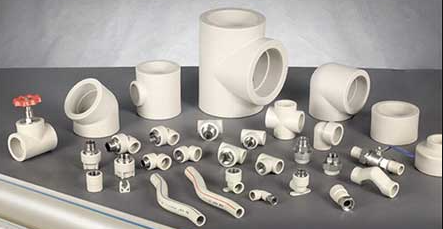
Yes, polypropylene (PP) can be injection molded. Polypropylene is a versatile and widely used thermoplastic polymer known for its excellent chemical resistance, good mechanical properties, and ease of processing. It is commonly used in various industries, including packaging, automotive, consumer goods, and medical applications. Here’s a detailed look at polypropylene injection molding:
Properties of Polypropylene
- Chemical Resistance:
- Polypropylene is highly resistant to a wide range of chemicals, including acids, bases, and solvents.
- Mechanical Properties:
- It has good tensile strength and flexibility, making it suitable for various applications.
- Low Density:
- Polypropylene is lightweight, which is advantageous in applications where weight reduction is important.
- Thermal Properties:
- It has a high melting point (around 160-170°C or 320-338°F) and good thermal stability.
- Fatigue Resistance:
- Polypropylene has excellent resistance to repetitive stress and fatigue.
- Recyclability:
- It is recyclable, making it an environmentally friendly material.
Applications of Polypropylene Injection Molding
- Packaging:
- Containers, caps, closures, and films for food and beverage packaging.
- Automotive:
- Bumpers, dashboards, interior trim, and other automotive components.
- Consumer Goods:
- Household items, toys, and sports equipment.
- Medical:
- Syringes, medical containers, and laboratory equipment.
- Industrial:
- Pipes, fittings, and storage tanks.
Injection Molding Process for Polypropylene
- Material Preparation:
- Polypropylene should be dried if it has been exposed to moisture, although it is less hygroscopic compared to other plastics. Typical drying conditions are 80-90°C (176-194°F) for 2-4 hours.
- Injection Molding Machine Setup:
- Temperature Settings: Barrel temperatures are usually set between 180°C to 230°C (356°F to 446°F), with mold temperatures between 20°C to 60°C (68°F to 140°F).
- Injection Pressure: Typically ranges from 800 to 1,500 psi, depending on part geometry and material viscosity.
- Cooling Time: Adequate cooling time is essential to ensure part stability and prevent warpage.
- Molding Cycle:
- Injection: Molten polypropylene is injected into the mold cavity under high pressure.
- Cooling: The part cools and solidifies in the mold. Cooling time depends on part thickness and mold temperature.
- Ejection: Once solidified, the part is ejected from the mold.
- Post-Processing:
- Parts may require trimming to remove excess material or flash.
- Additional finishing processes, such as surface treatment, may be applied to enhance appearance and properties.
Benefits of Using Polypropylene in Injection Molding
- Chemical Resistance: Suitable for applications requiring resistance to chemicals and solvents.
- Mechanical Properties: Good balance of strength and flexibility for a wide range of uses.
- Low Density: Lightweight, which is beneficial in reducing overall product weight.
- Thermal Stability: Suitable for applications exposed to varying temperatures.
- Cost-Effective: Polypropylene is relatively inexpensive, making it cost-effective for mass production.
[elementor-template id=”4330″]
Considerations
- Shrinkage:
- Polypropylene exhibits moderate shrinkage, so design considerations must account for this to ensure dimensional accuracy.
- Warpage:
- Proper mold design and processing conditions are necessary to prevent warpage, especially in larger parts.
- Mold Design:
- Proper mold design, including adequate cooling and venting systems, is essential to ensure part quality and efficient production.
- Additives:
- Polypropylene can be compounded with various additives to enhance its properties, such as fillers for increased strength, stabilizers for improved thermal resistance, and pigments for color.
Conclusion
Polypropylene is an excellent material for injection molding, offering a combination of chemical resistance, good mechanical properties, and cost-effectiveness. It is widely used in packaging, automotive, consumer goods, medical, and industrial applications. Proper material preparation, machine setup, and mold design are critical to achieving high-quality polypropylene injection-molded parts. By carefully managing these factors, manufacturers can fully exploit polypropylene’s benefits to produce durable, lightweight, and versatile components.
Related Conten: High Quality Prototype Plastic Injection Molding
 DTG Mould Trade Process |
|
| Quote: | According to sample, drawing and specific requirement. |
|---|---|
| Discussion | Mold material, cavity number, price, runner, payment, etc. |
| S/C Signature | Approval for all the items. |
| Advance | Pay 50% by T/T |
| Product Design Checking | We check the product design. If some position is not perfect, or can not be done on the mould, we will send customer the report. |
| Mold Processing | Send report to customer once each week |
| Mold Testing | Send trial samples and try-out report to customer for confirmation |
| Mold Modification | According to customer’s feedback. |
| Balance Settlement | 50% by T/T after the customer approved the trial sample and mould quality. |
| Delivery | Delivery by sea or air. The forwarder can be designated by your side. |
 |
|

